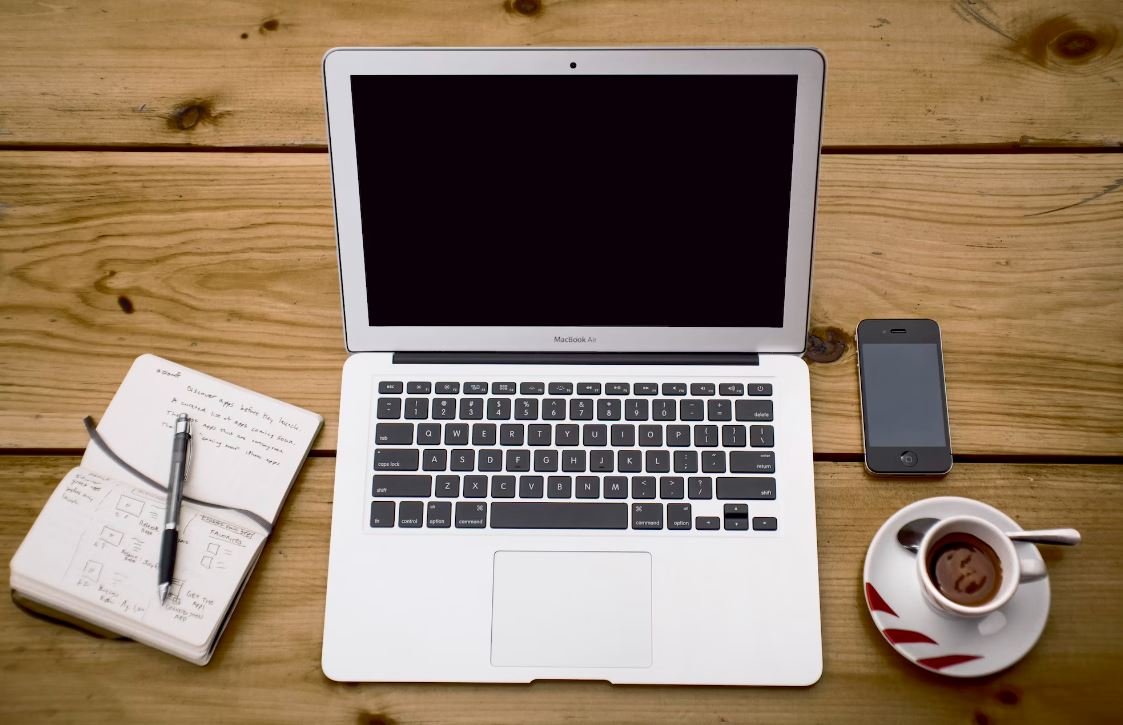Where to Journal
Journaling is an invaluable habit that allows individuals to reflect, record thoughts, and track personal growth. With the digital age, there are various platforms and tools available for convenient and secure journaling. Whether you prefer a traditional pen and paper approach or a digital solution, here are some popular options to consider.
Key Takeaways
- Journaling is a beneficial habit for self-reflection.
- There are both digital and traditional methods available.
- Consider your preferences and needs when choosing a journaling platform.
Digital Journaling Platforms
For individuals who prefer the convenience of a digital journal, several platforms offer advanced features and security measures:
- Penzu: A popular online journaling platform that provides encrypted storage and the ability to tag entries for easy organization.
- Day One: A mobile and desktop journaling app with a sleek interface and automatic location and weather tracking.
- Journey: A cross-platform journaling app that supports multimedia entries and integrates with popular cloud storage services.
*Journaling digitally allows for quick search and easy organization of entries, making it ideal for individuals who prefer an organized approach.
| Platform | Features | Price |
|---|---|---|
| Penzu | Encrypted storage, tagging, journal customization | Free with limited storage; Premium plans available |
| Day One | Sleek interface, location and weather tracking, multiple journal support | Free with limited features; Premium subscription available |
| Journey | Multimedia entries, cloud integration, cross-platform support | Free with limited features; Premium subscription available |
Traditional Pen and Paper
Despite the rise of digital solutions, many individuals still prefer the tactile experience of journaling with pen and paper. Here are a few popular options:
- Moleskine: A classic notebook brand known for its quality and variety of styles.
- Leuchtturm1917: A German notebook brand with features like numbered pages and a table of contents.
- Traveler’s Notebook: A customizable journal system that allows users to add and remove different inserts.
*Journaling with pen and paper offers a sense of mindfulness and a break from screens, appealing to those who value the traditional writing experience.
| Brand | Features | Price |
|---|---|---|
| Moleskine | Quality, variety of styles, built-in bookmarks, expandable pocket | Varies depending on size and style |
| Leuchtturm1917 | Numbered pages, index, table of contents, expandable pocket | Varies depending on size and style |
| Traveler’s Notebook | Customizable inserts, leather cover, variety of accessories | Varies depending on size and accessories |
Upon What Should You Decide?
When choosing where to journal, it ultimately comes down to personal preference. Consider the following factors:
- Do you prefer the convenience of digital journaling or the tactile experience of pen and paper?
- Are advanced features like tagging and multimedia support important to you?
- Consider your budget and whether you prefer a free or premium journaling solution.
By understanding your needs and preferences, you can make an informed decision and start your journaling journey with the platform that suits you best.

Common Misconceptions
Misconception: Journaling is only for writers
One common misconception about journaling is that it is only for people who consider themselves writers. However, journaling is not limited to those with a special talent for crafting compelling stories or poems.
- Journaling can be a therapeutic practice for anyone, regardless of their writing abilities.
- People often find journaling to be a helpful tool for self-reflection and personal growth.
- Journaling can be a means of capturing memories and preserving experiences, even for non-writers.
Misconception: Journaling is time-consuming
Many people believe that journaling requires a significant amount of time, which prevents them from engaging in the practice. However, journaling can be flexible and adaptable to one’s schedule and lifestyle.
- Journaling can take as little as five minutes a day, especially when using prompts or guided journaling resources.
- A simple reflection or short entry can still provide benefits and serve as a valuable outlet.
- There is no rule that journaling has to be done daily; it can be practiced on a less frequent basis as well.
Misconception: Journaling is only about writing down thoughts and feelings
Another common misconception about journaling is that it solely involves writing down one’s thoughts and feelings. While this is a prevalent form of journaling, there are many other creative ways to engage with the practice.
- Visual journaling allows individuals to express themselves through art, using images, drawings, and collages.
- Gratitude journaling focuses on cultivating a positive mindset by writing down things one is grateful for.
- Bullet journaling combines organization and creativity, allowing individuals to track goals, habits, and tasks in a personalized way.
Misconception: Journaling is only beneficial for emotional processing
While journaling is often associated with emotional processing and therapeutic benefits, it can offer much more than that. Journaling can be a multifaceted tool for various purposes.
- Journaling can be used as a brainstorming technique, helping individuals generate ideas and explore different perspectives.
- Many find journaling to be a helpful tool for setting goals and planning future actions.
- Academic journaling can assist students in organizing their thoughts, summarizing concepts, and reflecting on their learning.
Misconception: Journaling is a private, solitary activity
While journaling is often seen as a personal and private activity, it can also be a social and community-building practice.
- Group or shared journaling activities can promote connection and collaboration between individuals.
- Journaling can be a tool for self-expression and sharing stories with others through writing or art.
- Reading and discussing journal entries with trusted individuals can provide insights and deepen relationships.

Where to Journal: The Best Locations for Creative Writing
Choosing the right environment for journaling can greatly enhance the creativity and inspiration in your writing. Here are ten fascinating locations that provide the perfect setting for your journaling adventures:
1. Rustic Cabins in the Woods
Escape into nature’s embrace by journaling in a secluded rustic cabin. Surrounded by towering trees and serene landscapes, you’ll find tranquility and deep focus for your writing.
2. Vibrant Beach Cafes
Indulge your senses in a beach cafe with stunning ocean views. The soothing sound of waves, warm sand between your toes, and energizing sea breeze will ignite your creativity and leave you feeling refreshed.
3. Cozy Coffee Shops
Cozy coffee shops provide a delightful ambiance for journaling. Surrounded by the aroma of freshly brewed coffee and the gentle hum of background conversation, you’ll find a comforting blend of inspiration and productivity.
4. Inspiring Libraries
Immerse yourself in the world of literature by journaling in a grand library. Nestled amidst towering bookshelves filled with timeless knowledge, you’ll be inspired by the achievements of great writers who came before you.
5. Picturesque Parks
Find solace and serenity in a picturesque park, where the beauty of nature meets the peacefulness of open spaces. Journaling amidst colorful flowers and chirping birds will bring a sense of tranquility to your writing.
6. Majestic Mountain Peaks
Embrace the grandeur and awe-inspiring views found on majestic mountain peaks. The stunning vistas overlooking valleys and snow-capped ranges will unleash a sense of adventure and freedom in your writing.
7. Cultural Museums
Surround yourself with history and art by journaling in a cultural museum. The thought-provoking exhibits and artistic masterpieces will stimulate your mind and infuse your writing with a deep sense of cultural richness.
8. Quaint Bookstores
Explore the charm of quaint bookstores filled with literary treasures. The cozy atmosphere, soft lighting, and shelves bursting with books will transport you to a world of imagination and literary exploration.
9. Rooftop Gardens
Journaling atop a rooftop garden offers a unique blend of urban tranquility. With a stunning view of the city skyline and the calming presence of plants and flowers, you’ll find inspiration in the juxtaposition of nature and civilization.
10. Historic Landmarks
Immerse yourself in the stories of the past by journaling at historic landmarks. Whether it be a castle, ancient ruins, or a monument, these locations will ignite your imagination and offer a glimpse into the rich heritage of humanity.
By choosing the right location to journal, you can embark on a creative journey that intertwines your surroundings with the words that flow from your pen. Whether you crave solitude in the depths of nature or the vibrant energy of a bustling café, each unique environment will enrich your writing experience and fuel your creativity.
FAQs: Where to Journal
Question 1:
Can you provide tips for finding the perfect location to journal?
Answer: Researching and exploring nearby parks, coffee shops, and quiet spaces can help you find a suitable location for journaling. Consider a serene environment with minimal distractions.
Question 2:
What are the benefits of journaling outdoors?
Answer: Journaling outdoors allows you to connect with nature, breathe fresh air, and enjoy the natural calming effect of the environment, often enhancing creativity and focus.
Question 3:
How can I choose the best time of day to journal?
Answer: Determine your most productive times and align those with when you feel the most relaxed and focused. Some people prefer journaling in the morning for a fresh start, while others might find nighttime more introspective and reflective.
Question 4:
What should I consider when journaling in public places?
Answer: When journaling in public places, select areas with comfortable seating, less noise, and ample privacy. Coffee shops, libraries, and quiet corners of parks can be great options.
Question 5:
How can I create a tranquil journaling space at home?
Answer: Find a cozy spot where you can retreat and focus without distractions. Dim the lights, have calming scents, and create a peaceful ambiance to enhance your journaling experience.
Question 6:
Are there digital alternatives to physical journaling?
Answer: Yes, there are various digital journaling applications and websites available for those who prefer typing or storing their entries digitally. These platforms often include features like password protection and the ability to attach multimedia.
Question 7:
What factors should I consider when choosing between handwritten and digital journaling?
Answer: Consider factors such as convenience, personal preference, privacy, ease of organization, and whether you enjoy the tactile experience of handwriting or prefer the digital advantages of searchability and backup.
Question 8:
How can I maintain consistency in my journaling routine?
Answer: Set a specific time each day or week, establish a comfortable space, eliminate distractions, and remind yourself of the benefits and therapeutic value of journaling regularly.
Question 9:
What can I do if I run out of journaling ideas?
Answer: Explore writing prompts, reflect on your day, set goals, use gratitude lists, document dreams, write poetry, or even try different styles of journaling like bullet journaling or art journaling.
Question 10:
Should I worry about grammar and spelling in my journal entries?
Answer: While there are no strict rules for journaling, it’s entirely up to you. Some individuals prefer to maintain proper grammar and spelling, while others embrace the freedom of unfiltered thoughts and emotions without worrying about language correctness.




